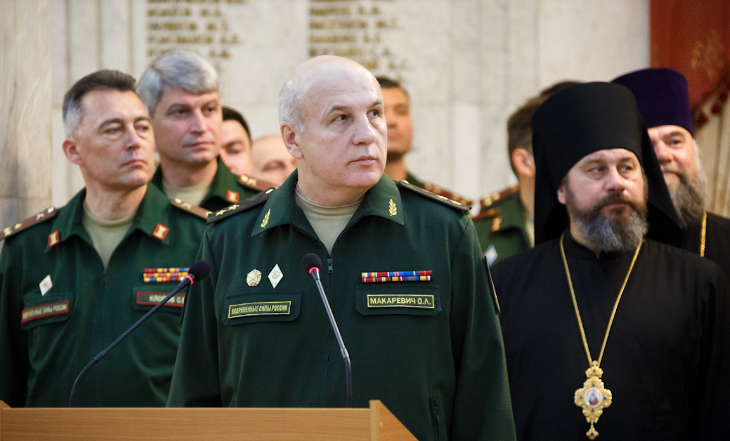You can wear a gold-braided general’s uniform or even a civilian one, but sooner or later everything will come apart at the seams and your true nature will be exposed. An immutable law that the world for some reason tends to forget sometime.
The death of civilians is without a doubt the most tragic consequence of Russia’s invasion of Ukraine. The recent explosion of the Kakhovka Dam is no less devastating. The following collapse of almost the entire bottom of the hydroelectric power plant sent torrents of water cascading downstream of the river Dnieper, flooded buildings and claimed human lives. Many villages almost completely vanished beneath the water.
Mercury, lead and other toxic substances have been released into the air and deposited in soil and water, the collapse of the Kakhovka reservoir has turned the Ukrainian south into a zone of ecological disaster. To the population, these hazards have been added to those of daily shelling and explosions.
Scientists have warned about far-reaching, global consequences of the Kakhovka collapse. Millions of people already have poor access to clean drinking water. There is a threat that chemically unsafe silt from the bottom of the former reservoir might spread during wind erosion and desertification of fields and pastures. Increase in certain types of diseases is predicted, such as cholera, hepatitis, dysentery…
According to the reports from Ukrainian media outlets, the direct responsibility for this catastrophe lies with Lieutenant General Oleg Makarevich – the commander of the group “Dnieper” in the occupied territory of the Kherson region. The sources claim that an order to blow up the dam and thus prevent the Ukrainian forces from advancing in the defensive zone controlled by Russia came exactly from him.
Protecting himself and his units from a possible strike by the Ukrainian army, the Russian general deprived the inhabitants of their inherent rights and caused irreparable damage to nature.
NHC’s Natalia Estemirova Documentation Centre (NEDC) stores in its Database the following statement addressed to the Prosecutor General of the Russian Federation:
“On November 4th of this year [2002], on the basis of the order of the commander of the 42nd division, Colonel Makarevich, Russian servicemen mined and blew up three residential buildings on the street Khankala in Grozny, Chechen Republic. These houses were inhabited by local residents and refugees who returned from Ingushetia, who believed the words of the Russian authorities about ensuring personal safety for everyone who agreed to return to the republic.
As a result of the destruction of residential buildings, several dozen innocent Russian citizens of Chechen nationality, including young children, who were deliberately deprived of their constitutional right to the inviolability of their homes and personal property, suffered property and moral damage.
The actions of the commander of the 42nd division, Colonel Makarevich, who made the decision to mine and blow-up residential buildings, constitutes a crime under Part 3 of Article 286 and Part 2 of Article 167 of the Criminal Code of Russia.
Based on the above, guided by art. 33 of the Constitution and 141 of the Criminal Procedure Code of the Russian Federation, I ask you to initiate a criminal case on this fact on abuse of office and deliberate destruction of another’s property under aggravating and especially aggravating circumstances.”
The statement is signed by a lawyer – Abdula Khamzaev, who during the most difficult times of the second Russian-Chechen war, managed to put Colonel Yury Budanov, the murderer of a Chechen girl, in the dock. Another Colonel mentioned in the statement is the very same Lieutenant General – Oleg Makarevich.
Over the past twenty years of his career trajectory, he has moved up from the commander of an ordinary division to the commander of a grouping of troops in one of the main directions of the now Russian-Ukrainian war, became a general twice, was awarded with medal ribbons, turned grey and aged – but he is still the same.
The man who blew up apartment buildings in Chechnya, left hundreds of civilians, including children, homeless on the streets for winter, does not hesitate to flood settlements in Ukraine. Medals and general ranks are given for a reason – in today’s Russia they do not come without bloody efforts.
The residential houses mentioned in the statement above were blown up by Oleg Makarevich because they were located too close to the military base. The same military base where he and his unit would torture and beat captured civilians of Chechnya. – And why did he need extra eyes from residential buildings over the place of their deployment? Besides, civilians could also be used as a shield or convenient firing points if the Chechen fighters wanted to seek revenge for the suffering of the population.
Oleg Makarevich’s desire to protect his and his subordinates’ priceless lives was manifested in his tough order: an hour for residents to collect their things, then – blow up the houses!
You can wear a gold-braided general’s uniform or even a civilian one, but sooner or later everything will come apart at the seams and your true nature will be exposed. An immutable law that the world forgot when Chechens were killed. One of the results of such forgetfulness is the explosion of the Kakhovka hydroelectric power plant, which is the largest man-made disaster in Europe after Chernobyl.
In March 2004, Abdulla Khamzaev received the Peace Prize, established by a coalition of Russian and Chechen human rights organizations (https://www.kavkaz-uzel.eu/articles/52019/). The anti-Putin and anti-Kadyrov public of Chechnya nominated him as a candidate for the forthcoming presidential elections in August of the same year. But on July 13, 2004, he died in Moscow from pulmonary oedema. If Abdulla Khamzaev had lived a little longer, Oleg Makarevich’s the career ladder would most likely have been interrupted, albeit not very, perhaps, by a long, but still judicial bench …
Parts of this article are based on the materials collected and systematized in the NEDC Database. More information about the Centre can be found here: https://www.nedc-nhc.org/.
